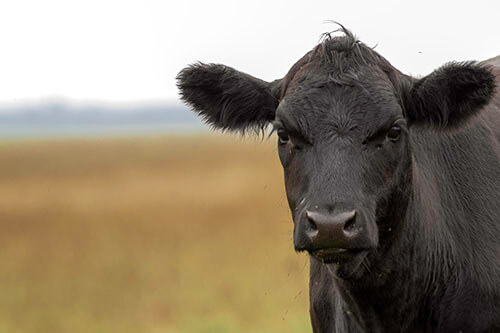Organic Selenium
Nov 09, 2020

When supplementing the diets of grazing livestock, sometimes it’s the little things that matter most. Minerals in particular play a vital role in beef cattle performance, and the mineral levels present in forages seldom meet the requirements of cattle. Though forages are not completely devoid of minerals, key trace elements such as copper, zinc, and selenium are often present in low amounts and their content in forages can vary with season and geography. Of these, selenium may have the most interesting history.
In the late 1800s, pioneers lost livestock grazing the Great Plains, and in the 1930s selenium was identified as the cause and considered a toxic element, eventually achieving the status of possible carcinogen. Finally, in the 1950s, selenium was recognized as a beneficial nutrient essential in the diet of healthy animals. Feeding supplemental selenium has shown to improve fertility in male and female cattle, increase growth rate, and enhance immune function. Selenium also interacts with vitamin E as part of an animal’s cellular antioxidant defense system. Today, most cattle feeds and supplements contain at least some supplemental selenium.
However, because selenium’s troublesome past, the U.S. Food and Drug Administration (FDA) strictly regulates the amount of supplemental selenium that can legally be included in feeds for livestock. Another issue is the majority of supplemental selenium currently being used in cattle diets comes from sodium selenite that is not readily absorbed or incorporated into animal tissues. This is because bio reduction by the microbes in the rumen, rendering a large portion of selenium unable to be absorbed.
Fortunately, an organic source of selenium such as selenium yeast contains selenium in the same form as found in plant tissue and has 30 to 50 percent more bioavailability than sodium selenite. Using a more available source allows feed manufacturers to honor FDA’s limit while still improving the selenium status of the animal. Healthier, more productive cattle are the result.
In the late 1800s, pioneers lost livestock grazing the Great Plains, and in the 1930s selenium was identified as the cause and considered a toxic element, eventually achieving the status of possible carcinogen. Finally, in the 1950s, selenium was recognized as a beneficial nutrient essential in the diet of healthy animals. Feeding supplemental selenium has shown to improve fertility in male and female cattle, increase growth rate, and enhance immune function. Selenium also interacts with vitamin E as part of an animal’s cellular antioxidant defense system. Today, most cattle feeds and supplements contain at least some supplemental selenium.
However, because selenium’s troublesome past, the U.S. Food and Drug Administration (FDA) strictly regulates the amount of supplemental selenium that can legally be included in feeds for livestock. Another issue is the majority of supplemental selenium currently being used in cattle diets comes from sodium selenite that is not readily absorbed or incorporated into animal tissues. This is because bio reduction by the microbes in the rumen, rendering a large portion of selenium unable to be absorbed.
Fortunately, an organic source of selenium such as selenium yeast contains selenium in the same form as found in plant tissue and has 30 to 50 percent more bioavailability than sodium selenite. Using a more available source allows feed manufacturers to honor FDA’s limit while still improving the selenium status of the animal. Healthier, more productive cattle are the result.